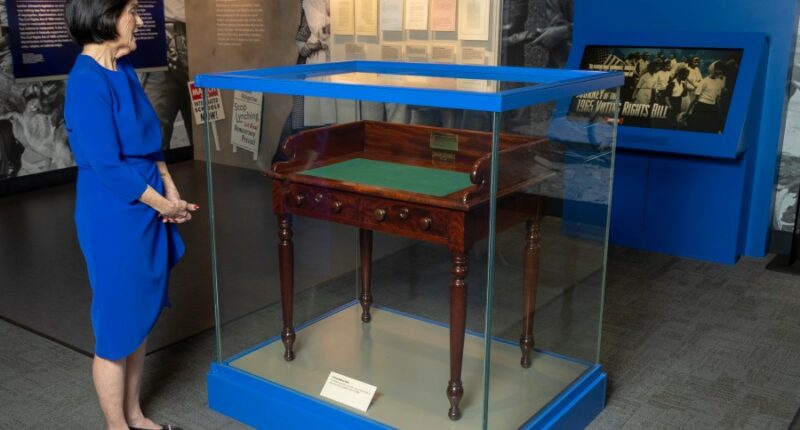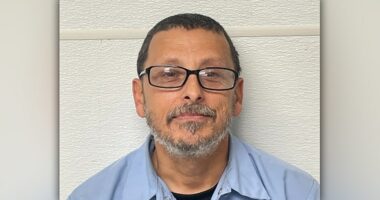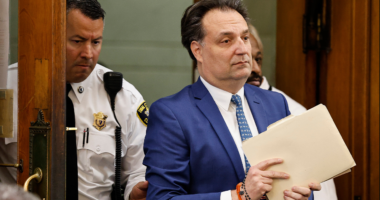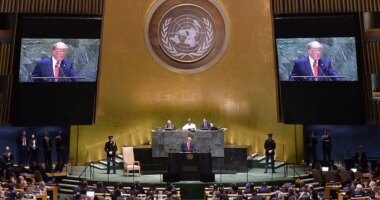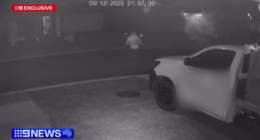Share this @internewscast.com

The Voting Rights Act of 1965 was enacted as a follow-up to the Civil Rights Act of the previous year. Departing from the usual practice, then-President Lyndon Johnson chose to sign the bill on Capitol Hill instead of staging a signing ceremony at the White House.
In a 2023 interview with The Associated Press, his daughter Luci Baines Johnson explained that he made this decision to pay tribute to the bravery of lawmakers who supported the legislation, risking their congressional seats.
What did the Voting Rights Act do?
The law had multiple provisions, primarily targeting the end of discriminatory measures against Black voters, such as poll taxes and literacy tests, which were used to discriminate and exclude. It also established a preclearance process, necessitating federal approval for changes in election procedures in all or parts of 15 states with discriminatory voting histories.
What did voter suppression look like before the law was enacted?
The 15th Amendment, ratified in 1870, prohibited states from denying voting rights based on race, color, or previous servitude. However, despite this amendment, many Southern states imposed literacy tests on Black citizens, not required for white citizens, by exploiting a loophole known as the grandfather clause, effectively disenfranchising Black voters.
In several states, Black citizens were also unfairly excluded from participating in party primaries, faced poll taxes as a voting barrier, and were intimidated by lynching and violence aimed at suppressing their vote.
What fueled the passage of the Voting Rights Act?
In 1965, during a period of civil rights protests in Alabama, a pastor was detained in Marion, sparking fears of lynching among his supporters. They organized a nighttime protest march from a nearby church to the jail, but police confronted them. In the chaos that followed, church deacon Jimmie Lee Jackson was tragically shot and killed.
The Southern Christian Leadership Conference and local leaders considered taking Jackson’s body from Marion to Montgomery. Instead, he was buried near Marion and plans were made to stage a march from Selma, 30 miles (48 kilometers) away and a more logical staging area. In what became known as Bloody Sunday, on March 7, 1965, hundreds of marchers were met by state troopers, who attacked them on the Edmund Pettus Bridge. Footage of the violence shocked the country and provided momentum for the landmark federal law.
When did the voting rights protections begin to erode?
In 2013, the Supreme Court issued a 5-4 decision known as Shelby v. Holder that removed the preclearance requirement in the law. Within hours, states began announcing changes to their laws that began restricting voting rights. That accelerated in Republican-controlled states after President Donald Trump began falsely claiming his loss for reelection in 2020 was due to widespread fraud.
Where are we now?
The Supreme Court is deciding whether to hear a case out of North Dakota in which the 8th Circuit Court of Appeals has held that private individuals and entities cannot file voting rights challenges. This is how the vast majority of such cases have been brought. The court has said that only the U.S. attorney general can file those cases. Two other 8th Circuit panels have made similar rulings. Other circuits have ruled that there is a right of private action for such challenges.
Separately, the Supreme Court is waiting to be briefed by attorneys in a Louisiana case that centers on whether a congressional district drawn to benefit Black voters is constitutional. At issue is Section 2 of the Voting Rights Act, which requires political maps to include districts where minority populations’ preferred candidates can win elections.
There also are ongoing actions at the state level as well as an executive order by Trump and congressional legislation that would require documented proof of citizenship to register to vote.
___
Follow the AP’s coverage of voting rights at
